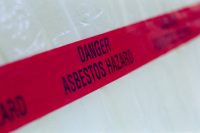TRI—the Now and Future Things
A TRI Recap TRI reports are required to be submitted by facilities with 10 or more full-time employees, in specified Standard Industrial Classification (SIC) and North American Industry Classification System (NAICS) codes, that manufacture, process, or otherwise use listed TRI chemicals in excess of the established thresholds. The thresholds per calendar year are: 25,000 pounds (lb) per […]










